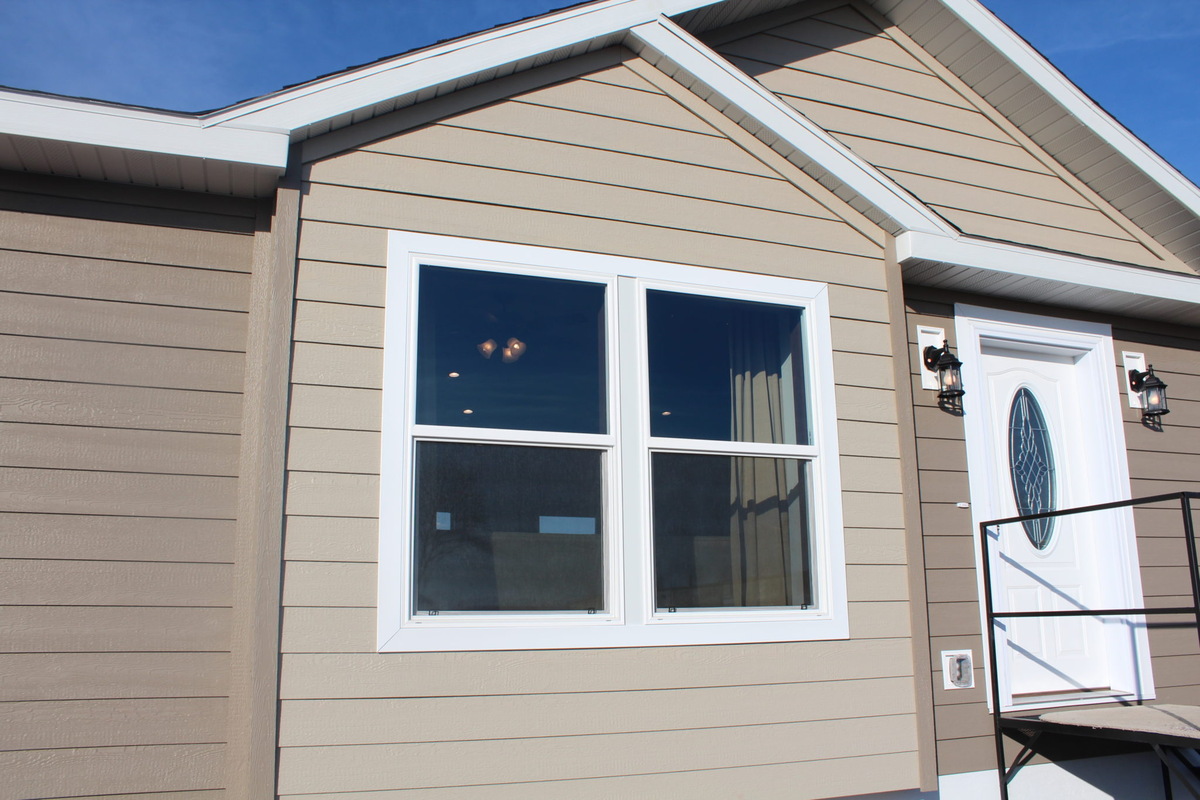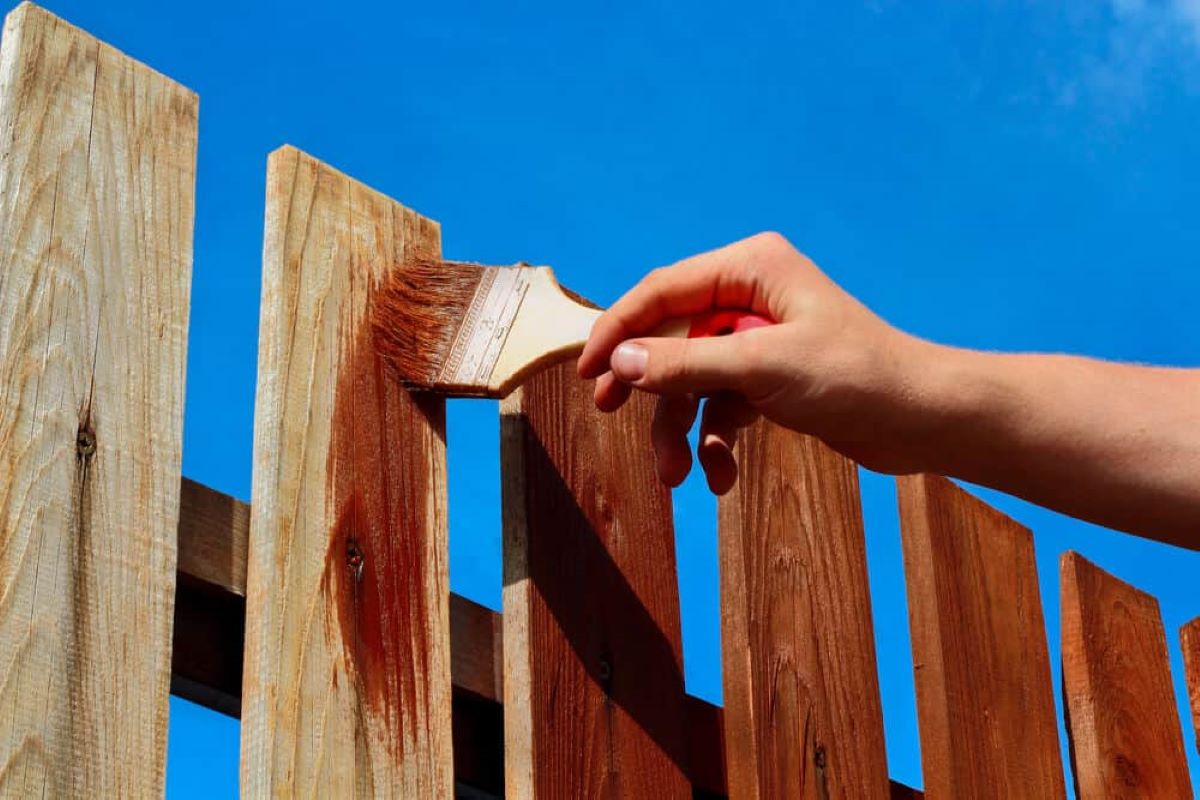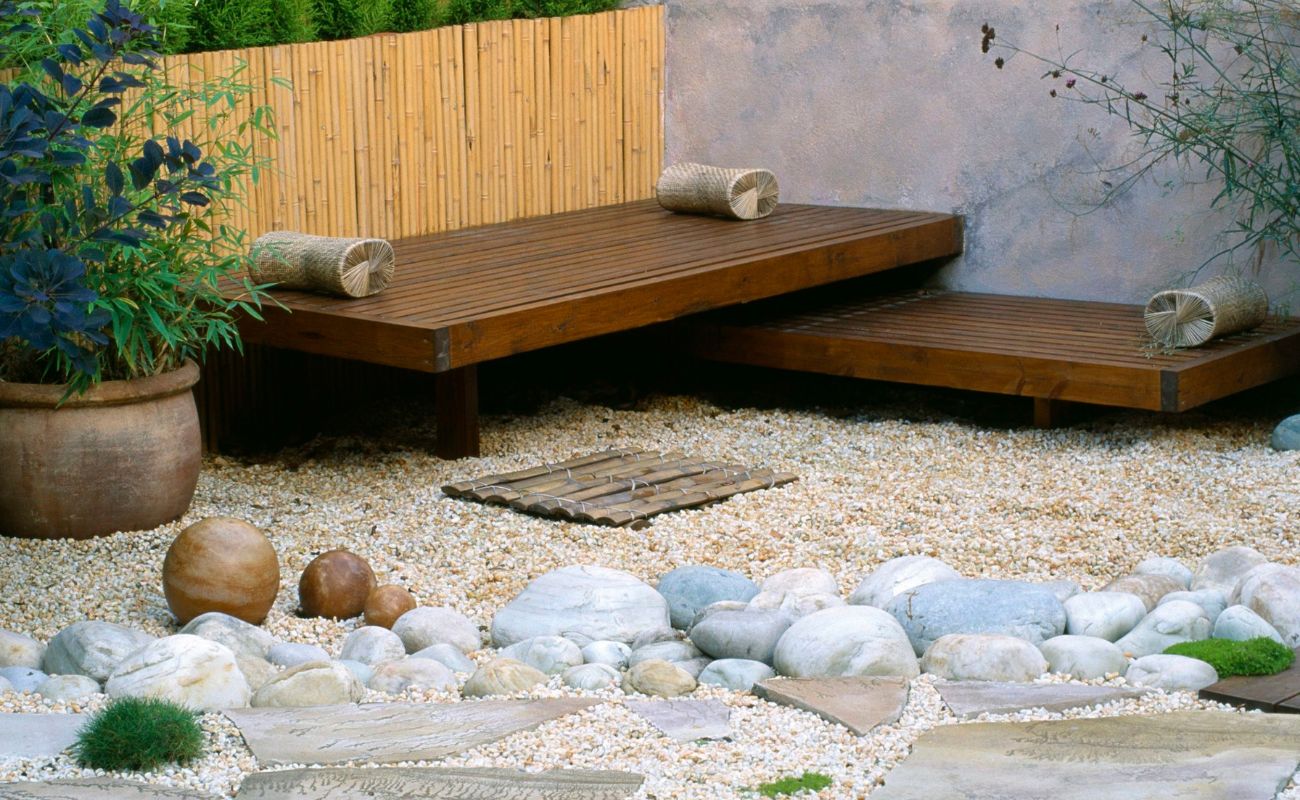Home>Garden Essentials>How Much Greenery Do I Need For Garland


Garden Essentials
How Much Greenery Do I Need For Garland
Modified: April 22, 2024
Find out the ideal amount of greenery you need for your garden garland. Transform your space into a lush paradise with the right amount of foliage.
(Many of the links in this article redirect to a specific reviewed product. Your purchase of these products through affiliate links helps to generate commission for Storables.com, at no extra cost. Learn more)
Introduction
Welcome to the fascinating world of garlands! A simple and versatile decor element, garlands can add a touch of beauty and charm to any space. Whether you want to adorn your mantel, staircase, or event venue, garlands are a fantastic choice. One crucial aspect of creating the perfect garland is the amount of greenery needed. Finding the right balance of foliage can make all the difference in achieving a visually stunning and full garland.
But how much greenery do you actually need for a garland? This question often pops up in the minds of DIY enthusiasts, event planners, and garden enthusiasts alike. In this article, we will explore the ins and outs of determining the right quantity of greenery for your garland, along with handy tips and tricks to make it look lush and vibrant.
Garlands have been used for centuries as a symbol of celebration, nature, and beauty. Traditionally made from fresh or dried leaves, flowers, or fruits, these decorative strands are versatile enough to suit any occasion and style. From vibrant holiday garlands adorned with ornaments and lights to rustic wedding garlands woven with wildflowers and greenery, the possibilities are endless.
Whether you are a novice or an experienced garland maker, understanding the importance of greenery in the process is crucial. Greenery forms the backbone of a garland, providing structure, texture, and color. It acts as a foundation on which you can add other decorative elements like flowers, berries, ribbons, or ornaments.
Greenery not only enhances the aesthetics of the garland but also adds a touch of freshness and life. It can create a cohesive and harmonious look by tying together different elements and bringing a natural and organic feel to the arrangement. The right balance of greenery can make your garland look full and lush, creating a stunning visual impact.
Before diving into the specifics of determining the amount of greenery needed for your garland, let’s explore some factors to consider. By taking these factors into account, you can make accurate calculations and ensure that your garland turns out just the way you envisioned.
Key Takeaways:
- 1. The right amount of greenery is crucial for a stunning garland. Consider length, density, and type of greenery to create a visually appealing and balanced arrangement.
- 2. Avoid common mistakes like underestimating length and not accounting for density when determining greenery quantity. Test different combinations and have fun creating your unique garland!
Read more: How Much Is A Greenery Garland
What is Garland?
A garland is a decorative arrangement consisting of foliage, flowers, or other materials, often in the form of a long and flexible strand. It is commonly used for adorning various spaces and surfaces, adding a touch of beauty, color, and festive spirit. Garlands have been used for centuries in different cultures and traditions, and they continue to be a popular choice for enhancing the visual appeal of homes, events, and celebrations.
Garlands come in various forms, sizes, and styles, allowing for endless possibilities and creativity. Traditionally, garlands were made from fresh or dried leaves, such as ivy, eucalyptus, or evergreens, which symbolize life, renewal, and the connection with nature. Over time, garlands have evolved to include a wide array of materials, including flowers, berries, ribbons, ornaments, and even fairy lights.
Garlands can be used in a multitude of ways, depending on the occasion and aesthetic preferences. They can be draped along banisters and staircases, wrapped around pillars and columns, hung on walls and doorways, or used as table centerpieces or focal points. Whether you are looking to create a festive atmosphere during the holiday season, add a touch of elegance to a wedding reception, or simply bring the beauty of nature indoors, garlands can transform any space.
With their versatility and adaptable nature, garlands can be customized to suit any theme or style. From rustic and natural-looking garlands with earthy tones and textures, to vibrant and colorful garlands with an abundance of flowers and foliage, there is a garland design for every preference. They can be tailored to match the color scheme of an event or harmonize with the existing decor of a space.
The use of garlands extends beyond decor. In many cultures, garlands hold symbolic meanings and are used for various rituals and ceremonies. In ancient times, garlands were worn as crowns or necklaces to signify honor, status, or achievement. They were also offered as a gesture of welcome, blessings, or as a symbol of love and friendship.
In essence, garlands are not only decorative elements but also convey emotions, evoke memories, and tell stories. They add a touch of natural beauty and create a welcoming and festive atmosphere in any setting. Whether you choose to purchase a pre-made garland or create your own, the possibilities are endless, and the result is sure to be a stunning piece of art.
The Importance of Greenery in Garland
Greenery plays a pivotal role in the creation of garlands. It acts as the foundation, providing structure, texture, and color to the arrangement. Without greenery, garlands can appear flat, dull, and lack visual interest. Here are several reasons why greenery is essential when designing garlands:
1. Structure and Form:
Greenery serves as the backbone of a garland, giving it shape and structure. It provides a sturdy base for adding other decorative elements like flowers, berries, or ornaments. The leaves and branches of the greenery create a framework that allows for the garland to be draped, hung, or arranged in various ways. This ensures that your garland maintains its desired shape and form, enhancing its overall visual appeal.
2. Texture and Dimension:
Greenery adds texture and dimension to the garland, making it visually interesting and captivating. Different types of greenery, such as ferns, eucalyptus, or ivy, have unique leaf shapes, sizes, and textures. By incorporating a variety of greenery, you can create a visually appealing garland with layers, depth, and contrast. The textural elements bring life and vitality to the garland, making it more visually engaging and dynamic.
Read more: How Much Greenery Do You Need For A Wreath
3. Color and Contrast:
Greenery provides a vibrant and refreshing color palette to the garland. The shades of green, ranging from deep forest greens to soft pastel hues, add depth and richness to the overall design. Moreover, green acts as a neutral backdrop that allows other colors in the garland, such as flowers or berries, to stand out and pop. The contrast between the greenery and colorful elements create a visually striking garland that catches the eye.
4. Cohesion and Harmony:
Greenery brings a sense of cohesion and harmony to the garland by tying together different elements. It acts as a unifying factor that brings balance and unity to the design. The consistent presence of greenery throughout the garland creates a cohesive and seamless look, resulting in a visually pleasing arrangement. The organic nature of greenery also adds a sense of tranquility and natural beauty to the garland.
5. Versatility and Adaptability:
Greenery offers versatility and adaptability, making it suitable for various themes, styles, and occasions. Whether you are going for a rustic woodland look, a romantic garden-inspired design, or a festive holiday garland, greenery can be seamlessly incorporated. It can be paired with different decorative elements to achieve the desired aesthetic, making it an indispensable component in garland creation.
As you can see, greenery is not just a mere accessory in garlands; it is a crucial ingredient. It adds structure, texture, color, and cohesion to the arrangement, transforming it into a stunning visual display. Whether you opt for fresh greenery or artificial foliage, choosing the right type and quantity of greenery is key to creating a garland that exudes beauty and elegance.
Factors to Consider when Determining the Amount of Greenery Needed
When it comes to determining the amount of greenery needed for your garland, several factors need to be taken into consideration. These factors will help you make accurate calculations and ensure that you have enough greenery to create a full and visually appealing garland. Here are some key factors to consider:
Read more: How To Make A Garland With Greenery
1. Length and Size of the Garland:
The length and size of the garland will directly impact the amount of greenery required. If you are creating a short garland to adorn a small area, such as a tabletop or a wreath, you will need less greenery. On the other hand, if you are designing a long garland to drape across a staircase, mantel, or along a banquet table, you will need a larger quantity of greenery. Measure the area where you intend to place the garland to get an accurate estimate of the required length.
2. Density and Fullness:
The desired density and fullness of the garland will influence the amount of greenery needed. If you want a lush and thick garland with a lot of foliage, you will require more greenery. However, if you prefer a more minimalistic or airy look, you can use fewer greenery stems. Consider the overall aesthetic you want to achieve and adjust the quantity of greenery accordingly.
3. Type of Greenery:
Not all greenery is created equal when it comes to volume and mass. Some types of greenery, like ferns or ivy, have smaller leaves and delicate stems, which means you will need more stems to create a full effect. On the other hand, greenery with larger leaves, like magnolia or eucalyptus, can provide more coverage with fewer stems. Take into account the specific characteristics of the greenery you are using to determine the quantity required.
4. Placement of Other Decorative Elements:
If you plan to add additional elements like flowers, berries, or ornaments to your garland, you need to consider their placement and how they will interact with the greenery. These elements will occupy some of the space within the garland, and you will need to account for that when determining the amount of greenery needed. Ensure that you have enough greenery to create a balanced and visually pleasing composition.
Read more: How To Make Greenery Garlands For A Wedding
5. Personal Preferences and Style:
Your personal preferences and style will also play a role in determining the amount of greenery needed. If you prefer a more foliage-centric garland with a dominant presence of greenery, you will require a larger quantity. However, if you want to incorporate more decorative elements and have the greenery serve as a supporting role, you may need less greenery. Consider your style and vision for the garland to determine the appropriate amount of greenery to use.
By taking these factors into account, you can make informed decisions about the quantity of greenery needed for your garland. Keep in mind that it’s always better to have slightly more greenery than you think you need, as you can trim and adjust as you go along in the garland creation process. With careful planning and consideration, you can create a beautiful and well-balanced garland that will enhance the ambiance of any space.
Types of Greenery for Garland
When it comes to choosing greenery for your garland, the options are abundant. From lush and vibrant leaves to delicate and wispy stems, there is a wide variety of foliage to suit every style and preference. Here are some popular types of greenery commonly used in garlands:
1. Eucalyptus:
Eucalyptus is a versatile and visually appealing greenery option. With its silvery-blue or grayish-green leaves, eucalyptus adds a touch of elegance and sophistication to garlands. The elongated and slightly drooping leaves create a graceful and flowing effect, making eucalyptus a popular choice for wedding garlands and romantic-themed decor.
2. Ivy:
Ivy is a classic and timeless greenery choice. With its trailing and cascading vines, ivy adds a lush and natural look to garlands. The heart-shaped leaves of ivy create a sense of charm and whimsy, making it a versatile option for both rustic and elegant garlands. Ivy is also known for its resilience and ability to withstand different climatic conditions, making it suitable for both indoor and outdoor garlands.
Read more: How To Make Fresh Greenery Garlands
3. Ferns:
Ferns are a popular choice for their delicate and intricate foliage. With their feather-like fronds and lacy textures, ferns bring a touch of ethereal beauty to garlands. Ferns are available in various types, including maidenhair ferns, Boston ferns, and asparagus ferns, each offering their unique visual appeal. The airy and vibrant green foliage of ferns adds a sense of lightness and freshness to garlands.
4. Boxwood:
Boxwood is a widely used greenery option for its dense and compact foliage. With its small, glossy leaves, boxwood provides a lush and polished look to garlands. It is often used in formal and symmetrical garland designs, adding structure and definition. Boxwood is also a great choice for creating geometrical shapes or adding a touch of evergreen charm to garlands.
5. Olive Branches:
Olive branches are prized for their simple and elegant beauty. With their silvery-gray leaves and slender stems, olive branches bring a Mediterranean and rustic feel to garlands. The symbolism associated with olive branches, such as peace and abundance, makes them a meaningful choice for special occasions and celebrations. Olive branches can be used as a focal point or as an accent in garlands to add a touch of natural charm.
6. Seeded Eucalyptus:
Seeded eucalyptus is a variant of eucalyptus with small clusters of seeds attached to the stems. This unique feature adds visual interest and texture to garlands. The combination of the textured leaves and the clusters of seeds creates a whimsical and organic look, making seeded eucalyptus a popular choice for bohemian or nature-inspired garlands.
These are just a few examples of the many types of greenery available for garlands. You can mix and match different greenery varieties to create a customized and unique garland design. Each type of greenery brings its own charm and character to the arrangement, allowing you to create a garland that fits your style, theme, and occasion perfectly.
Read more: How Much Batt Insulation Do I Need
How to Calculate the Amount of Greenery Needed for Garland
Calculating the amount of greenery needed for your garland is essential to ensure that you have enough foliage to create a full and visually pleasing arrangement. While there isn’t an exact formula, you can follow these steps to estimate the quantity of greenery required:
1. Measure the Length:
Start by measuring the length of the area or surface where you plan to place the garland. This will give you an idea of how long your garland needs to be. If you want the garland to drape along a table or a mantel, make sure to account for any decorative overhang or additional length you desire.
2. Determine the Density:
Consider the level of density or fullness you want for your garland. Do you prefer a lush and thick garland, or a more minimalistic and airy look? The density will determine the amount of greenery needed. For a fuller garland, you will require more greenery stems, and for a lighter appearance, you can use fewer stems.
3. Select Your Greenery:
Choose the type of greenery you want to use in your garland. Different greenery varieties have varying sizes and coverage capabilities. Some may have smaller leaves that require more stems for a fuller look, while others have larger leaves that provide more coverage with fewer stems. Take into account the specific characteristics of the greenery you’ve chosen when estimating the quantity required.
Read more: How Much Rocks Do I Need For Landscaping
4. Calculate the Stem Usage:
Consider the length of the stems and how they will be spaced in the garland. If you plan to space the stems closer together for a denser look, you will need more stems. On the other hand, if you prefer a more spaced-out arrangement, you can use fewer stems. Additionally, factor in any space or gaps you plan to leave for adding other decorative elements like flowers, berries, or ornaments.
5. Account for Wastage:
It’s common to experience some wastage when working with greenery, especially if you need to trim or shape the stems. It’s better to have slightly more greenery than you think you need, as you can always trim and adjust as you go along. Adding a little extra will ensure that you have enough to cover the entire length of the garland and create the desired effect.
6. Do a Test Run:
Before committing to a large quantity of greenery, it’s a good idea to do a test run with a small section of your garland. This will give you a better sense of the coverage and density achieved with the number of greenery stems you used. It will also help you determine if you need to make any adjustments or add more greenery to achieve the desired look.
Remember, calculating the amount of greenery needed for your garland is not an exact science, and it can vary depending on personal preferences and the specific design you want to create. Use these steps as a guideline to estimate the quantity required, but don’t hesitate to make adjustments as you see fit to achieve the perfect balance and fullness in your garland.
Tips for Creating a Full and Lush GarlandCreating a full and lush garland is a beautiful way to elevate your home decor or enhance the ambiance of any event or celebration. With the right techniques and attention to detail, you can achieve a visually stunning garland that exudes beauty and elegance. Here are some tips to help you create a full and lush garland:
Read more: How Much Blown-In Insulation Do I Need
1. Start with a Solid Base:
Begin by selecting a sturdy base for your garland, such as a wire or faux greenery garland. This will provide a structure to build upon and make it easier to attach the greenery stems. A solid base will ensure that your garland remains intact and retains its fullness throughout, even if you’ll be adding other decorative elements.
2. Choose a Variety of Greenery:
Incorporate a variety of greenery types to add texture and depth to the garland. Choose foliage with different leaf shapes, sizes, and colors. Mixing different greenery varieties such as eucalyptus, ivy, and ferns will create a visually interesting and dynamic garland. Consider combining different shades of green to add depth and visual appeal.
3. Layer and Overlap the Greenery:
When attaching the greenery stems to the base, make sure to layer and overlap them for a fuller look. Start by attaching the larger and more robust greenery varieties closer to the base, and gradually work your way outwards with the smaller and more delicate foliage. This layering technique will create depth and volume in your garland.
4. Vary the Stem Lengths:
Trim the stems of the greenery at varying lengths to create a natural and organic appearance. Some stems can be longer, cascading down the garland, while others can be shorter and more compact. Varying the lengths will add dimension and movement, making the garland look more dynamic and visually pleasing.
Read more: How Much Driveway Sealer Do I Need
5. Fill in Gaps with Filler Greenery:
If you notice any gaps or spaces between the greenery stems, fill them in with filler greenery. Filler greenery, such as baby’s breath or sprigs of small leaves, can be used to add volume and fill in any bare areas. This will give your garland a more lush and complete look.
6. Incorporate Other Decorative Elements:
To enhance the fullness and visual appeal of the garland, consider adding other decorative elements. Flowers, berries, pinecones, or ornaments can be strategically placed throughout the garland to add pops of color and texture. Be sure to balance the placement of these elements with the greenery to maintain the overall lushness of the garland.
7. Secure the Greenery Stems Properly:
Make sure to secure the greenery stems properly to the base to prevent them from shifting or falling off. Use floral wire, zip ties, or hot glue to secure the stems tightly. This will ensure that your garland remains intact and maintains its fullness, even during transportation or if it’s hung vertically.
By following these tips, you can create a full and lush garland that will be the centerpiece of your decor. Experiment with different greenery combinations and decorative elements to achieve a design that suits your style and enhances the ambiance of your space.
Common Mistakes to Avoid when Determining Greenery Quantity
Determining the right quantity of greenery for your garland can be a challenging task. It’s easy to underestimate or overestimate the amount needed, which can result in a garland that lacks fullness or an excessive amount of foliage. To help you avoid these pitfalls, here are some common mistakes to avoid when determining greenery quantity:
Read more: How Much Wildflower Seed Do I Need
1. Not Considering the Length of the Garland:
One common mistake is not taking the length of the garland into account. If you underestimate the length, you may end up with a garland that is too short and lacks coverage. On the other hand, overestimating the length can lead to an excessive amount of greenery. Measure the space where you plan to place the garland accurately to determine the appropriate length.
2. Ignoring the Density and Fullness Desired:
Not considering the level of density and fullness desired can also result in an inadequate or excessive amount of greenery. Take into account the aesthetic you want to achieve. If you prefer a lush and thick garland, you will need more greenery. Conversely, if you want a more minimalistic and airy look, you can use fewer stems. Determining the desired density will help you estimate the quantity needed more accurately.
3. Overlooking the Type of Greenery:
Each type of greenery has its own characteristics, such as leaf size and coverage capability. Overlooking these factors can lead to imbalanced coverage or unnecessary waste. For example, greenery with larger leaves can provide more coverage with fewer stems compared to greenery with smaller leaves. Consider the specific characteristics of the greenery you are using to estimate the quantity needed effectively.
4. Not Accounting for Other Decorative Elements:
Forgetting to account for other decorative elements like flowers, berries, or ornaments can result in an insufficient amount of greenery. These elements can take up space within the garland, reducing the overall coverage of the greenery. Ensure that you have enough greenery to create a balanced composition, considering the additional elements that will be added.
Read more: How Much Fire Glass Do I Need
5. Underestimating Wastage or Trimming Needs:
It’s common to experience some wastage or trimming needs when working with greenery. Underestimating these factors can lead to a shortage of greenery. It’s better to have slightly more greenery than you think you need. Leave room for trimming and adjusting as you go along in the garland creation process to ensure that you have enough to cover the entire length and create a full effect.
6. Not Doing a Test Run:
Skipping a test run before committing to a large quantity of greenery is a mistake. Doing a small section of the garland as a trial will help you gauge the coverage and fullness achieved with the number of greenery stems used. It allows you to make any necessary adjustments or add more greenery to achieve the desired look before proceeding with the entire garland.
By avoiding these common mistakes, you can ensure that you have an appropriate amount of greenery for your garland. Taking into account the length, density, type of greenery, other decorative elements, wastage, and doing a test run will help you create a garland that is full, visually appealing, and perfectly suits your design vision.
Conclusion
Creating a garland with the right amount of greenery is key to achieving a visually stunning and impactful decor piece. Taking into consideration factors such as the length of the garland, desired density, type of greenery, and other decorative elements will help you determine the appropriate quantity of foliage needed. By avoiding common mistakes like underestimating length, not accounting for density, overlooking greenery type, forgetting about other decorative elements, underestimating wastage, and skipping a test run, you can ensure that your garland turns out just as full and lush as envisioned.
Whether you’re decorating for a special event, adding a festive touch to your home, or simply seeking to bring the beauty of nature indoors, a garland filled with greenery can transform any space. The choice of greenery, such as eucalyptus, ivy, ferns, or boxwood, allows you to tailor the garland to your preferred style and theme, while layering and overlapping the foliage creates depth and dimension.
Striving for a full and lush garland involves thoughtful planning and attention to detail. Varying stem lengths, filling in gaps with filler greenery, and strategic placement of other decorative elements contribute to achieving a visually stunning result. It’s important to secure the greenery stems properly to the base to maintain the integrity of the garland, ensuring that it remains full and lush throughout its use.
As with any creative endeavor, practice and experimentation are key. Don’t be afraid to try different combinations of greenery, adjust the quantity, and make modifications along the way. Each garland you create is an opportunity to refine your skills and bring your unique creative vision to life.
In conclusion, by considering the factors discussed, avoiding common mistakes, and implementing the tips provided, you can confidently embark on creating a full and lush garland that will enhance any space with its natural beauty and bring joy and enchantment to all who behold it.
Frequently Asked Questions about How Much Greenery Do I Need For Garland
Was this page helpful?
At Storables.com, we guarantee accurate and reliable information. Our content, validated by Expert Board Contributors, is crafted following stringent Editorial Policies. We're committed to providing you with well-researched, expert-backed insights for all your informational needs.






0 thoughts on “How Much Greenery Do I Need For Garland”